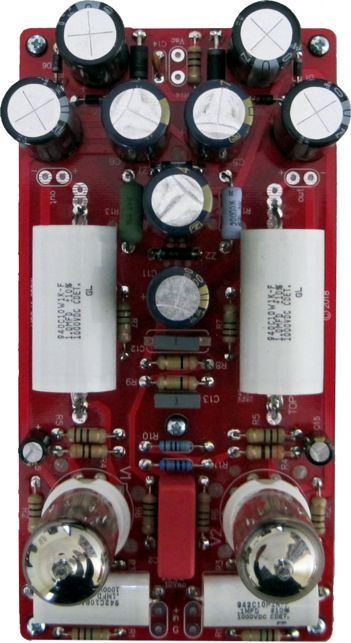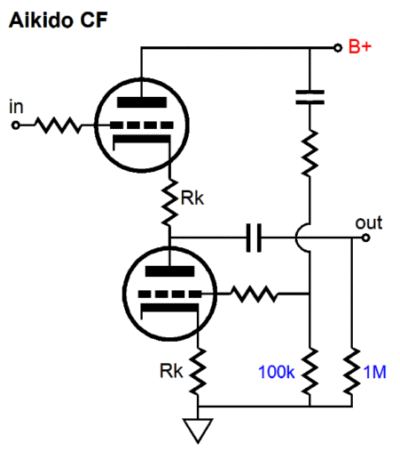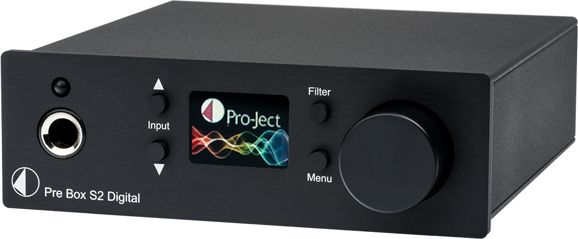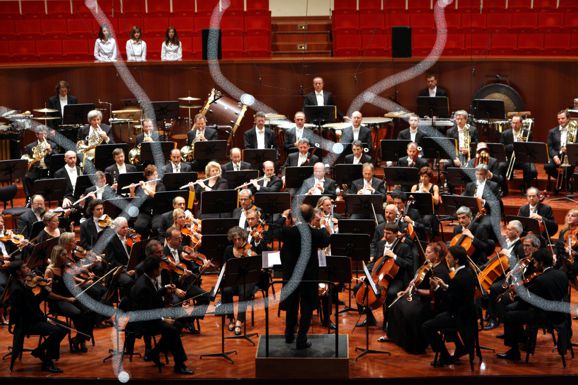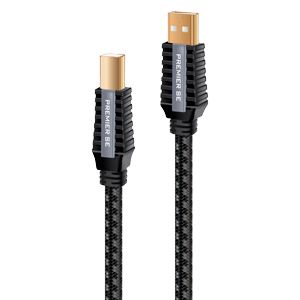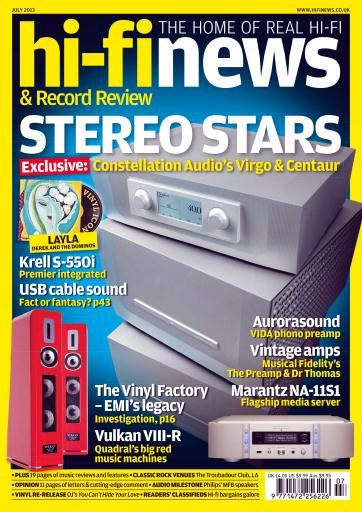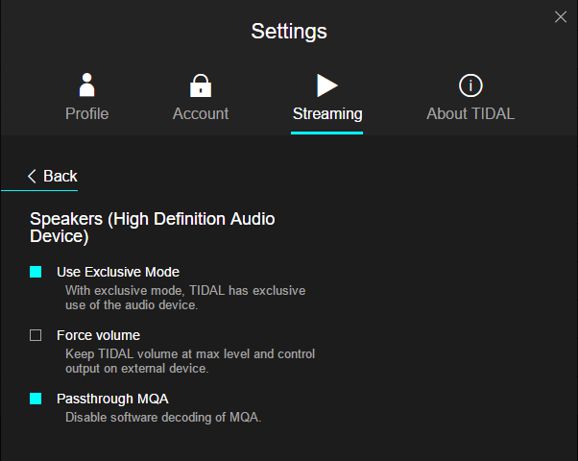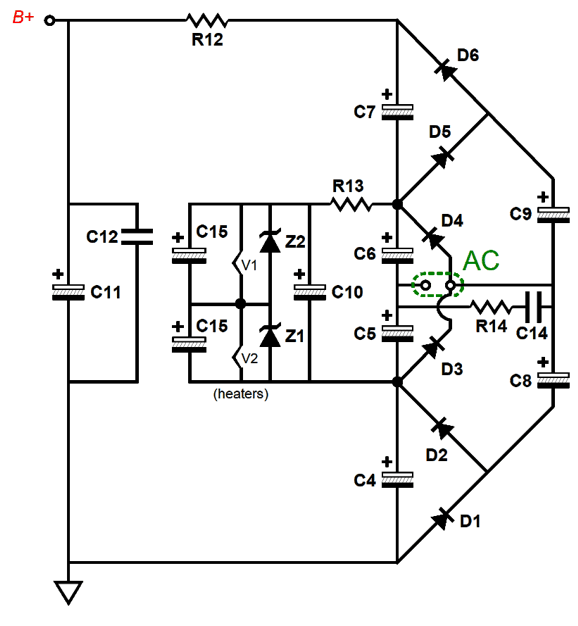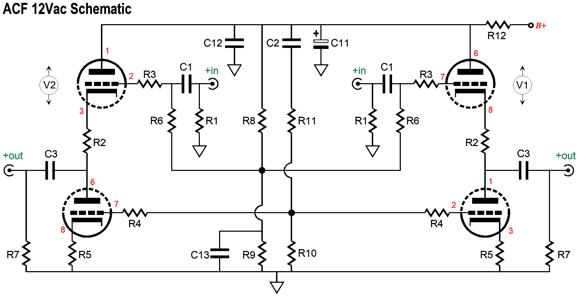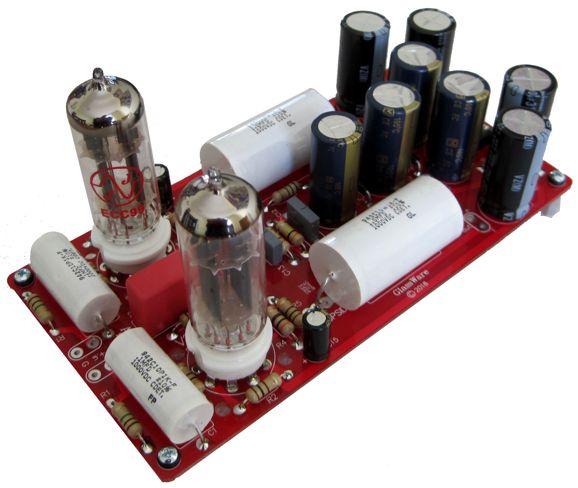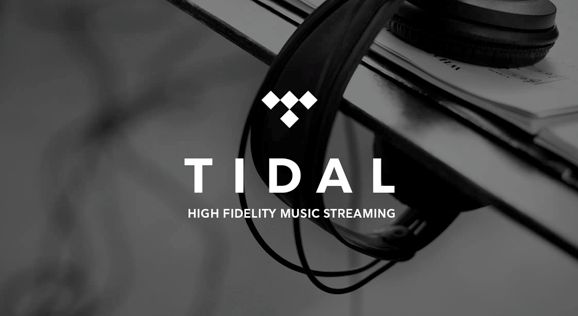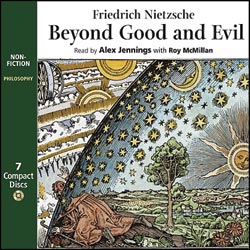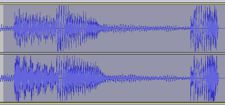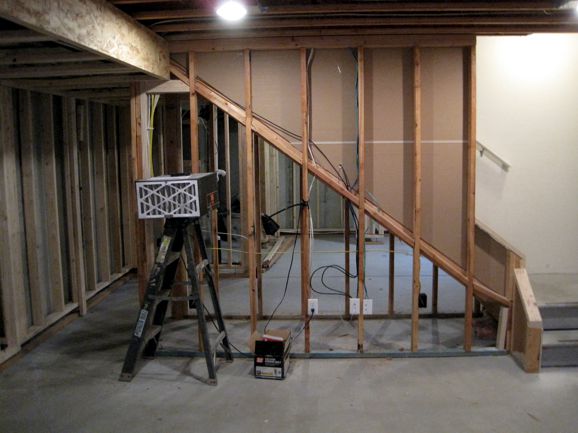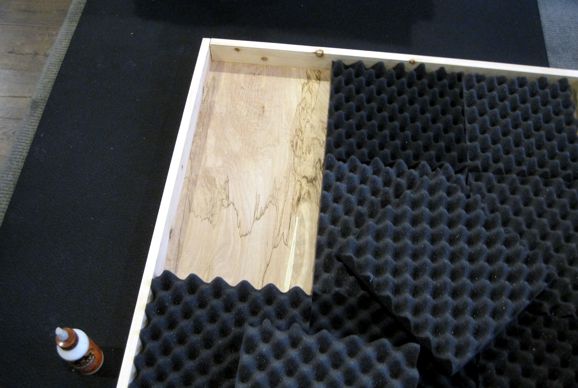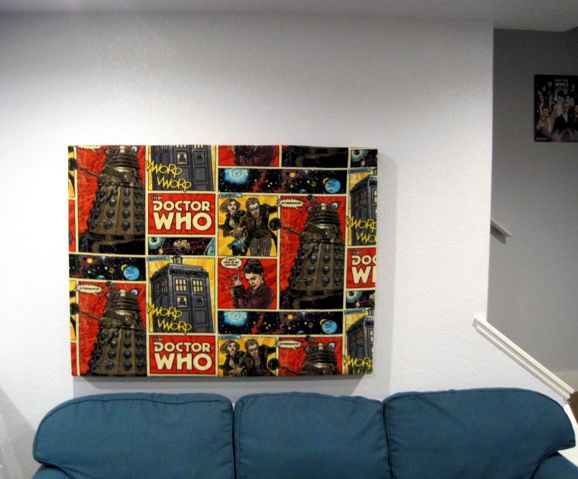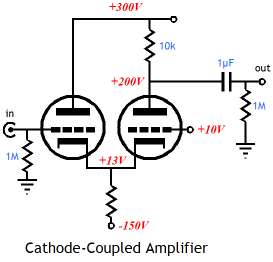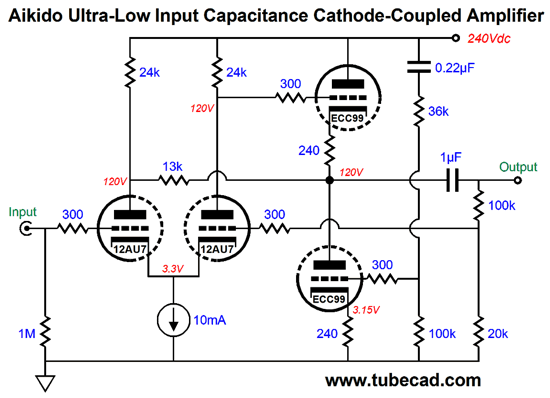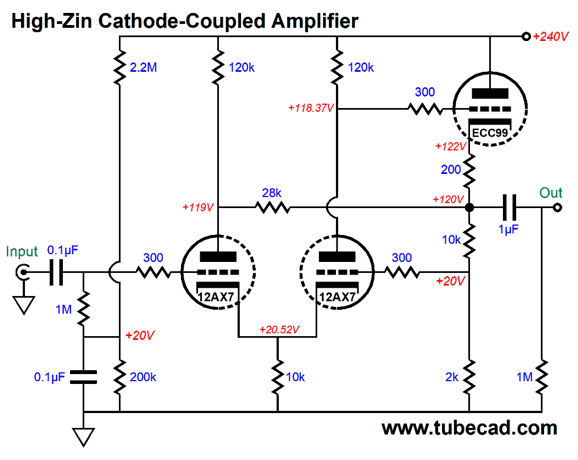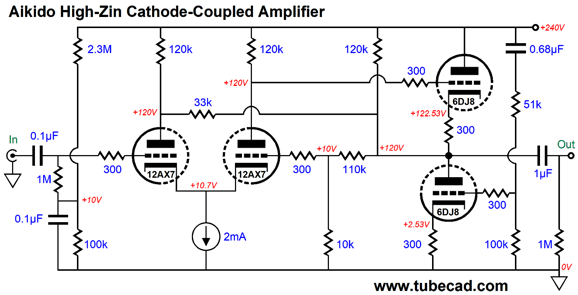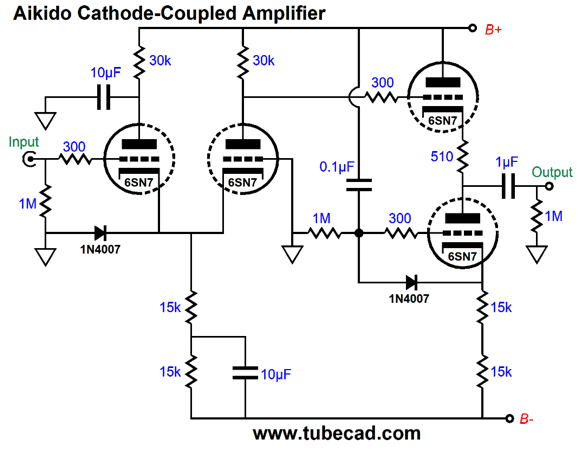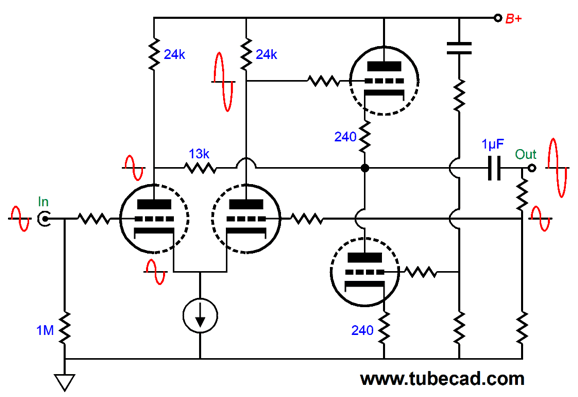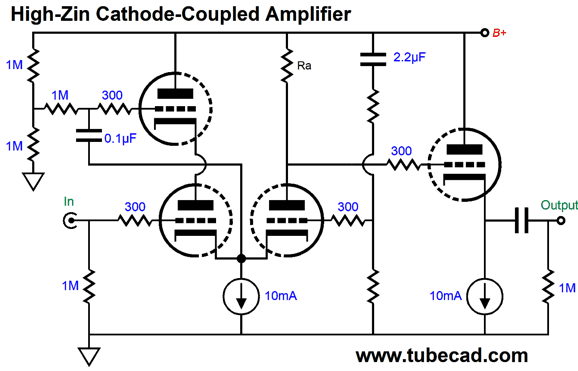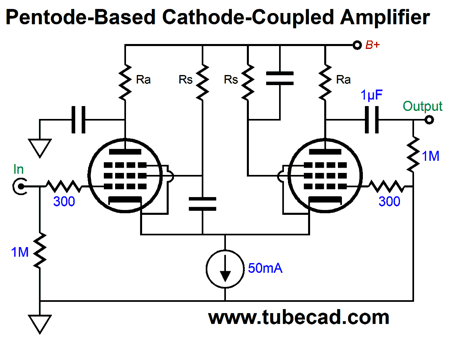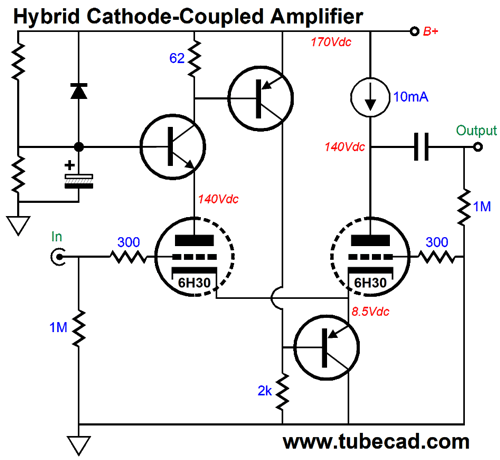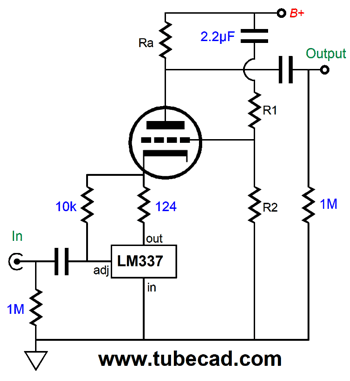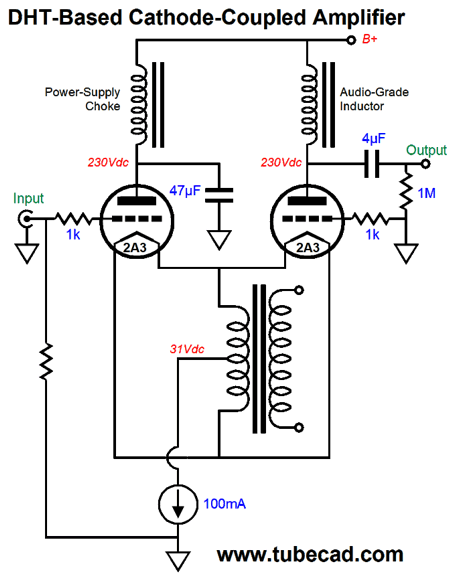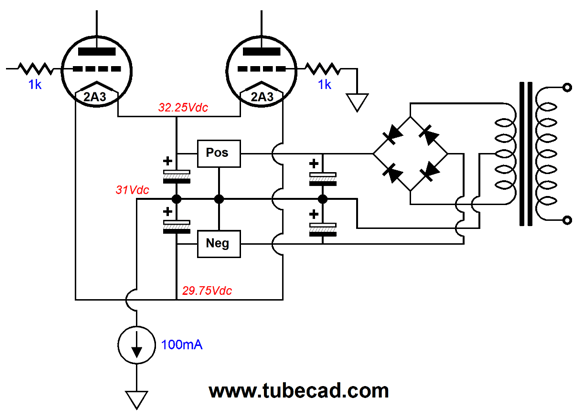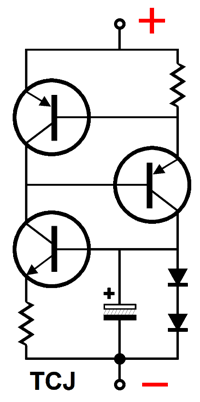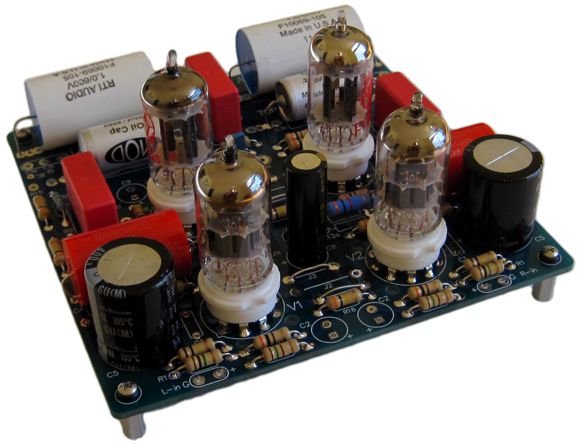| John Broskie's Guide to Tube Circuit Analysis & Design |
19 February 2018 Post 413
New Tube Buffer: ACF 12Vac
The Aikido 12Vac is one of my most popular kits. Why? Two reasons: you power it with a 12Vac wallwart and yet all the Aikido Mojo obtains. Well, my expectation is that this new ACF 12Vac will prove even more popular. Why? No gain. What? No gain, no pain. Most CD players and DACs offer more than enough output to drive most amplifiers beyond full output and into square waves. So why add extra gain? (By the way, in the photo above, you see the smaller CDE 940 series of 1µF coupling capacitors being used, as I am waiting for a shipment of the bigger and better-sounding CDE 942 series of capacitors to arrive. When they arrive, I will replace the above photo with a new photo holding the bigger capacitors.)
The ACF is basically the last half of the Aikido amplifier, a modified cathode follower buffer circuit that nulls the power-supply noise at its output by proactively injecting a small sample of the power-supply noise into the bottom triode's grid, which generates a countervailing current variation, which nulls the power-supply ripple from the output. In addition, the Aikido cathode follower produces lower distortion by using the triode’s own non-linearity against itself by providing a complementarily non-linear load for the top triode’s cathode. Why would you need a unity-gain tube buffer? Although theoretically the purest path to follow, passive line stages often disappoint, proving inadequate and incapable of adequately driving high-capacitance cables or low-input impedances. In addition, many solid-state audio devices just sound too cold and brittle on their own. Adding a tube-based buffer can help humanize the sound, perhaps due to harmonic enrichment. Here is an example: my Christmas/birthday present finally arrived, a Pro-Ject Pre Box S2 DAC and headphone amplifier; thanks Uncle Frank.
At first, I was rather disappointed, as it merely sounded different, but not substantially better than my old DAC; indeed, I am being too generous here, as I thought it sounded worse. After it a few days, it broke in or, rather, I broke in. (I believe that we break in, that we must learn to hear a new piece of equipment. I would love to take two identical pieces of audio gear and keep one in the box, while its brother gets days and weeks of constant playing; then hold a shootout and see if a group of audiophiles can hear any difference between the two. My guess is that both will "require breaking in.") A few days later, I still wasn't happy, however. I had been listening to my old DAC through an ACF-2 unity-gain buffer, but only to the new Pre Box S2 DAC. So, I reintroduced the ACF-2 and the sound improved, but it still was not perfect. The sound still seemed disjointed, much like this photo, with some part clear but the entire sonic picture seemed fragmented.
I wondered how a 10-year-old DAC, albeit a DAC I modified, could sound better than this cutting-edge design that holds dual ESS Sabre ESS9038 DACs and was designed by very capable folks. I then realized that I wasn't comparing apples to apples, as I used a fiber-optic Toslink connection with my old DAC and a USB cable with the new DAC. I tried the Pre Box S2 DAC with the Toslink and the sound improved immediately. Much, much better. Unfortunately, I was eager to try feeding the new DAC some MQA music files from Tidal directly, which the Pre Box S2 DAC would unfold by itself, but I couldn't do so with the Toslink connection. What to do? I looked at the 15 year old el cheapo USB cable that had come with some printer or external hard-drive and I wondered if it could be at fault. Well, after some searching on the web, I bought a Pangea 1 meter SE USB cable for $50. Dang it, it was worth the $50, I am somewhat embarrassed to admit. Of course, maybe a new Belkin USB cable for a third the price and with gold-plated ends would have proved just as good. Maybe. I don't know, as I didn't try any. I do know, however, that the fractured sonic image has now coalesced to a normal whole and my ears are quite happy. (I wonder why no one makes a USB cable with only the two wires needed to transfer the digital data and no 5V power-supply wires? The twisted pair of data wires could still be shielded with grounded foil, but the shield would only be grounded at the receiving end; a small ceramic capacitor, say 100pF, could terminate the shield at the output end.) The English magazine, Hi-Fi News, back in July of 2013 held a review of high-end-audio USB cables, complete with scope captures of sqarewaves leaving the cables. Some of the sqaure waves were quite soggy indeed. By the way, you have make a few changes to Tidal to pass the unfolded MQA music file to the DAC.
Last night, I hooked up the new ACF 12Vac to the new Pro-Ject DAC and they sounds great together. Naked, the Pre Box S2 DAC sounds dang good, but a tad too cool, too mechanical for my ears. The next step will be to use an LV-Reg setup to deliver 5Vdc to power the Pre Box S2 DAC, rather than the switcher wallwart that came with it. I have been stunned by the improvement that a good linear regulator can make to some digital gear. Okay, returning to the ACF 12Vac, the power supply uses big-valued, but low-voltage capacitors in a voltage multiplying rectifier arrangement.
The ACF 12Vac differs from the older ACF PCB, however, in that it can only use two 12-volt-heater tubes, such as the 12AU7, 12BH7, and JJ ECC99; no 6-volt-heater tubes, such as the 6CG7 or 6H30 or 6DJ8. This is the result of the 24Vdc of heater voltage created on the PCB from the 12Vac. Each heater element gets shunted by a 12V zener diode and its own 470µF/16V Panasonic FM bypass capacitor. The raw B+ comes in at about 90Vdc and is about 80Vdc after the RC filter made up of R12 and C11 & C12.
In my build, I used two JJ ECC99 tubes. Soon, I hope to try the 12AU7 and 12BH7.
The ACF 12Vac PCB and kit is available now at the GlassWare-Yahoo store.
Tidal Second, they must hire someone who knows and loves classical music. Classical music is radically different from country, folk, jazz, pop, rap, and rock in that the composer is all important, not the performing artist or orchestra or conductor. These last three are important to be sure, but they are not ALL IMPORTANT. Over and over, I could not find one symphony I sought, although Tidal did indeed offer it, as it was listed by the orchestra, not the composer or conductor. And if you search for "Symphony 2," you may not get the same results that typing "symphony number 2" would yield. Moreover, I don't want to see 1,000 second symphonies by three hundred different composers. For example, if I search for Jean Sibelius, I should be shown all the recordings that Tidal has of his works, sorted by symphonies, tone poems, and suites. And once I click "symphonies" I should see a list of conductors. Third, Tidal should add a time category to allow us better sorting. For classical music, we could use era groupings:
For pop music, they could simply use decades:
The important aspect here is that we do not care when the album was recorded or released. We do not care if the latest repackaging of a Beatles album was released last month; the music belongs to the 1960s. Sometimes I only feel like hearing some 1950s jazz; other times, 2000s jazz; other times still, classical music from the Baroque period. World music should be categorized by Country or dominating culture, such as Latin or Persian. Fourth, Tidal must add a sub-genre category, as each existing genre holds many sub-genre categories. In fact, before we get to genre, Tidal should offer a meta category: classical music, pop music, spoken-word, soundtracks, and world music. Think about it, spoken word contains hundreds of genres and sub-genres. By the way, if you do subscribe to Tidal, be sure to check Friedrich Nietzsche's Beyond Good and Evil read by Alex Jennings. Mr. Jennings is a fine actor and his reading is exemplary. (Dare I say it? You must be both very bright to read and to read aloud Nietzsche, as he is constantly messing with his readers.* Alex Jennings must be very bright indeed.)
Last, Tidal has to fix its weird tick of truncating the end of the last song (or track) played. At first, I wasn't sure it was happening, but I often felt that some music new to me ended too abruptly, sans appropriate resolution; then I discovered some poetry readings on Tidal, and I was sure of it. Bastards. Edgar Allan Poe pointed out that a poem's most important line was its last line. To end a poem without its last line should be punishable by public spanking. I used the Audacity program to see if I could catch Tidal in the act of premature ending. It worked. Here is the last minutes of the last track of a jazz album, when when the album was played from beginning to end.
Now, here are the same end to the same last track, when played separately.
Quite a difference. What is going on here. My guess is that Tidal counts up all the track time totals and streams only for that duration. Alas, this time total may not be accurate and might not include the gaps between tracks. In other words, five minutes of database programming could fix the problem As it stands, filled as it is with annoying top-of-the-chart mindless obsession (I could go happily to my grave without ever paying any further attention to Taylor Swift, for example), Tidal is a great bargain and a must have. I know audiophiles who think nothing of buying a new $5,000 phono cartridge each year, so each time an LP is played it cost them $7 to $10 in needle wear, but begrudge the $20 a month Tidal charges for their premium service. If Tidal does not realize, however, that not every single one of its subscribers is a bezitted youth, some other company will. Either way, eventually we will get a streaming-music service that knows how to please all its subscribers.
Sound Treatment
I slapped my hands and I heard a loud echo. The solution would be to add a sound-absorbing panel behind where I sit when I listen to music. The problem was that such panels cost a bundle and usually are unattractive to one's spouse. Thus, I decided to make one. I bought a three foot by four foot panel of 1/4in plywood and some runs of 1/2in by 2.5in strips of wood and some cheap acoustic tiles (2.5in thick) from Amazon.
Some nails and glue was all that was needed. Of course, the spouse-acceptance factor was less than zero, so I set about making it look better.
At the fabric store, we found the above print on soft, fluffy cloth (for those in the know, fleece cloth). How does it sound, or rather not sound? It works, as the same hand clap results in a much attenuated echo; and with my head at the center of the sound panel, the imaging is much improved. All in all, I spent about $35 for this project.
Cathode-Coupled Amplifiers
Returning to the cathode-coupled amplifier, a reader, Dhruv, asked me a few weeks ago (well, more than a few weeks ago) asked which cathode-coupled amplifier circuit I thought best. If your first thought was that I sent him a link to my own cathode-coupled amplifier PCB and kit, you do not know me very well. The links that I did send him sent him to post number 359 and 360; in post 360, he would find the following schematic, which was the one variation that I deemed best for general line-stage amplifier use.
I wish that I had devoted the entire post to this circuit, as it offers several compelling attributes, such as no phase reversal, low distortion, low output impedance, very-high input impedance, and a fine PSRR. (Of course, all cathode-coupled amplifiers exhibit no phase reversal and, in general, low distortion, so this circuit only adds the other three attributes.) Point-to-point wired and placed in a fancy box, replete with a thick front face-plate and gold-contact switches and gold coated RCA jacks, this variation on the circuit would prove a giant killer and wouldn't be embarrassed to wear a $5,000 price-tag. We could use either four 6SN7 tubes (for stereo line-stage amplifier) or four ECC99 or 6N6 or 6H30 or 5687 tubes. If we have access to a negative power-supply rail, we could use a high-mu dual triode, such as the 6SL7 or 6SU7 or 12AY7 or 12AV7 or 12A7 in the cathode-coupled amplifier position paired with a beefy dual-triode in the ACF position. This arrangement does not mean that we would develop high gain at the output, as the negative feedback loop sets the final gain. Since many tube lovers disdain negative power-supply rails, we could use the following variation to forgo the negative rail.
If you are using a quiet, regulated power supply, the above circuit will work well. If you want to go for the full Aikido mojo, then the following circuit is a better choice.
On the other hand, if you do not disdain negative-power-supply rails, then the following design is worth looking into.
Note that the half of the long-tail resistance is capacitor shunted, which prompts a ripple null at the differential amplifier's output. Second, note how the 0.1µF capacitor terminates into the B+ rail, not ground, not the negative power-supply rail. Why? This arrangement nulls the ripple from the cathode follower's output. Returning to the Aikido high-Zin cathode-coupled amplifier, the high input impedance results from the input triode's Miller-effect capacitance being nulled by the presence of the same signal at the plate as appears at its grid (and its cathode). Indeed, both the plate and the cathode follow the grid, so both of these capacitances get sidestepped. Here is the AC voltage relationships through the entire circuit.
Note how the plate and cathode trace the signal as the grid sees. Alternatively, we could use a cathode follower to drive the input triode's plate, as shown below. (Thanks, Merlin.)
Once again, the input triode's plate follows the input signal, resulting in a very high input impedance. Why would this be important? Volume controls. For example, let's assume a 100k volume control is used before this cathode-coupled amplifier gain stage. At the -6dB position of attenuation, the volume potentiometer's output impedance is 25k. Now, 25k is quite high, if the gain stage consists of a grounded-cathode amplifier, as the grid-to-plate capacitance gets multiplied by the gain, i.e. the Miller-effect capacitance. But in this circuit, there is no multiplying effect, which means that the high-frequency cutoff is so far out that we needn't worry about it. Okay, let's get a bit more out there. What if we used two pentodes, say two 6V6 or two EL84 or EL86 pentodes. The input pentode would have its screen follow the grid, while the output pentode's screen would see 100% of the power-supply noise. Why? The power-supply noise presented to the screen will prompt an anti-phase signal at the plate, which can null the power-supply noise at the output, if we choose our values carefully. In other words, if we make Ra equal to the inverse of the pentode's screen's transconductance.
Another out-there idea might be the following design, which forgoes the constant-current source or long-tail resistor at the cathodes.
Instead, the top PNP transistor monitors the current flow through the input triode. If this triode's current conduction varies, the PNP transistor will force the bottom PNP transistor to respond by moving up and down, as the topmost PNP transistor strives to see a constant-current flow through the input triode. The result is that the two cathodes will be forced to follow the input signal. The single NPN transistor serves as a simple capacitance-multiplier circuit that delivers clean DC voltage to the input triode's plate. Since we have gone this far, why not go all the way out there and try a single-triode cathode-driven amplifier with Aikido mojo thrown in?
For the last 27 years or so, I have been trying to find an audio use for the LM337 negative adjustable voltage regulator, as its tab connects to its input, so it can be safely grounded to the chassis. Well, the above circuit is one possible design. By the way, the 10k resistor is effectively much larger in value, as the LM337 will move it up and down with the input signal. The 124-ohm resistor sets the idle current to 10mA. yes, auto-bias. Resistors R1 & R2 define a two-resistor voltage divider that will deliver the needed amount of AC power-supply noise to the grid so that the noise cancels at the the plate. At the other extreme, we find readers who bemoan the paucity of directly-heated-triode (DHT) circuits here. Well, the following design is my attempt to atone.
Two different types of inductors are used. The input 2A3 gets a cheap power-supply choke, while the output 2A3 gets a high-quality, audio-grade inductor, which is neither cheap nor easy to find. The two 2A3 tubes share the same AC heater winding, whose center-tap attaches to the constant-current source. of course, we could use regulated DC instead, as shown below. Be sure to check out post 372-b for more details on how this is done.
I have just used a symbol for the constant-current sources in these designs, as you can plug in your favorite, say a depletion-mode MOSFET or an LM317. On the other hand, we could use the following design.
Two constant-current sources are placed in opposition to each other. The top two PNP transistors define one constant-current source, while the bottom NPN transistor and the two diodes define the second constant-current source.
//JRB
*A Sample from Beyond Good and Evil
User Guides for GlassWare Software Since I am still getting e-mail asking how to buy these GlassWare software programs:
For those of you who still have old computers running Windows XP (32-bit) or any other Windows 32-bit OS, I have setup the download availability of my old old standards: Tube CAD, SE Amp CAD, and Audio Gadgets. The downloads are at the GlassWare-Yahoo store and the price is only $9.95 for each program. http://glass-ware.stores.yahoo.net/adsoffromgla.html So many have asked that I had to do it. WARNING: THESE THREE PROGRAMS WILL NOT RUN UNDER VISTA 64-Bit or WINDOWS 7 & 8 or any other 64-bit OS. One day, I do plan on remaking all of these programs into 64-bit versions, but it will be a huge ordeal, as programming requires vast chunks of noise-free time, something very rare with children running about. Ideally, I would love to come out with versions that run on iPads and Android-OS tablets.
//JRB |
John wants to give
Special thanks to the Special 65 Only those who have produced a technical white paper or written an article on electronics know just how much time and effort is required to produce one of my posts, as novel circuits must be created, SPICE simulations must be run, schematics must be drawn, and thousands of words must be written. If you have been reading my posts, you know that my lifetime goal is reaching post number one thousand. I have 587 more to go. My second goal is to gather 1,000 patrons. I have 935 patrons to go.
And
High-quality, double-sided, extra thick, 2-oz traces, plated-through holes, dual sets of resistor pads and pads for two coupling capacitors. Stereo and mono, octal and 9-pin printed circuit boards available.
Designed by John Broskie & Made in USA Aikido PCBs for as little as $24 http://glass-ware.stores.yahoo.net/
The Tube CAD Journal's first companion program, TCJ Filter Design lets you design a filter or crossover (passive, OpAmp or tube) without having to check out thick textbooks from the library and without having to breakout the scientific calculator. This program's goal is to provide a quick and easy display not only of the frequency response, but also of the resistor and capacitor values for a passive and active filters and crossovers. TCJ Filter Design is easy to use, but not lightweight, holding over 60 different filter topologies and up to four filter alignments: While the program's main concern is active filters, solid-state and tube, it also does passive filters. In fact, it can be used to calculate passive crossovers for use with speakers by entering 8 ohms as the terminating resistance. Click on the image below to see the full screen capture. Tube crossovers are a major part of this program; both buffered and un-buffered tube based filters along with mono-polar and bipolar power supply topologies are covered. Available on a CD-ROM and a downloadable version (4 Megabytes). |
||
| www.tubecad.com Copyright © 1999-2018 GlassWare All Rights Reserved |
